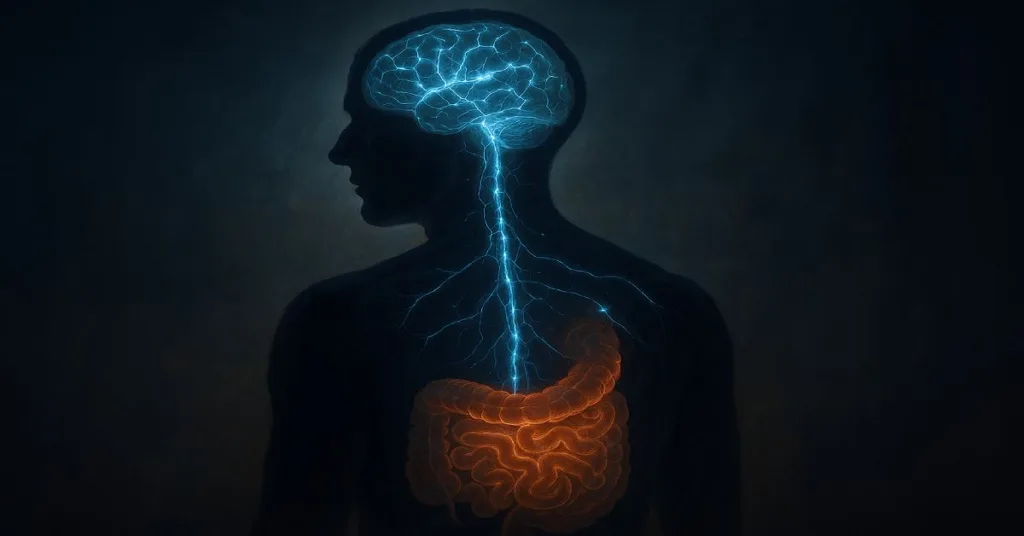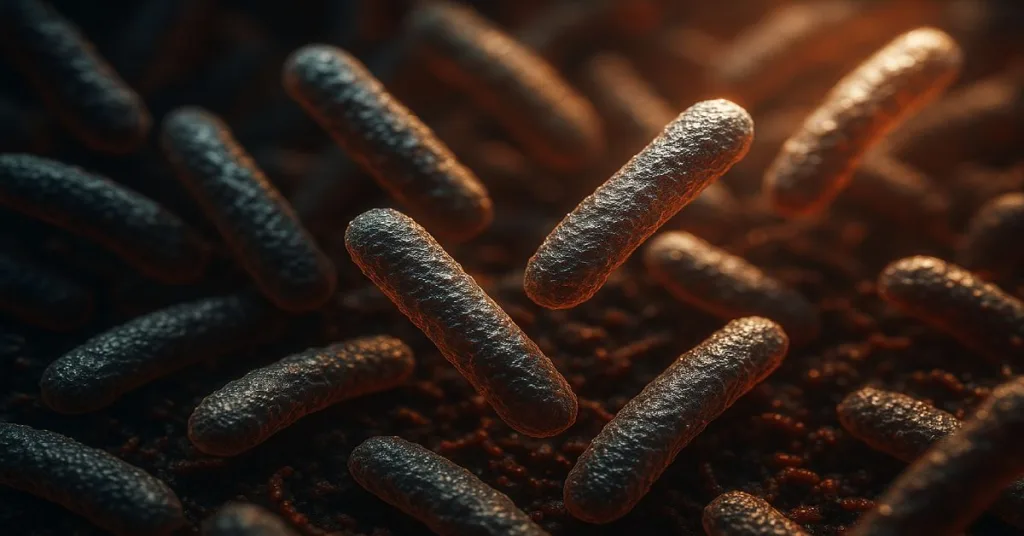Gut health officially went mainstream in 2025. But most of what’s sold under that label still runs on half-truths, recycled studies, and influencer buzzwords. 2026 is shaping up as the year this industry either matures or implodes.
Behind the marketing haze, a few real breakthroughs are reshaping how scientists — and supplement makers — understand the gut. The goal is no longer “more bacteria.” It’s about which bacteria matter, what they produce, and how they influence everything from mood to metabolism.
Here’s what the evidence actually says — and what’s likely to dominate the conversation in 2026.
WhatSuppWorks may earn commissions on recommended products at no extra cost to you. We only promote supplements supported by verified research.
The Gut Health Boom Meets Its Reality Check
Probiotic gummies, fiber powders, fermented greens — they’re everywhere. But real gut health doesn’t come from trendy packaging.
Researchers now understand the gut as an ecosystem: a living network of microbes, enzymes, and metabolites that communicate with the immune system, hormones, and even the brain.
Key shifts going into 2026:
- Precision replaces volume. Billions of CFUs mean nothing without verified strains that survive digestion.
- Prevention replaces detox. The new science focuses on balance, not “cleansing.”
- Transparency replaces hype. Companies are being pressed to show human data, not animal studies or marketing fluff.
In short: gut health isn’t guesswork anymore. The science is catching up to the sales pitch.
1. Psychobiotics — The Gut–Brain Connection Grows Up
For years, “gut–brain” supplements promised to boost mood and focus, often without evidence. That’s changing.
Psychobiotics — live microbes and prebiotic compounds that influence mood and cognition — are finally moving from theory to measurable results.
Recent research has shown:
- Lactobacillus helveticus R0052 and Bifidobacterium longum R0175 can modestly reduce stress and anxiety scores in humans.
- Microbial metabolites like GABA and tryptophan derivatives influence neurotransmitters that regulate mood.
- Multi-strain formulas paired with magnesium, vitamin B6, or L-theanine improve resilience to daily stress.
None of this turns probiotics into antidepressants. But daily use of a well-formulated psychobiotic may help stabilize cortisol, improve sleep, and blunt stress reactivity.
Try this: Seed DS-01 Daily Synbiotic uses clinically studied strains that support both digestive and mood balance — one of the few products transparent about its bacterial research.
In 2026, expect more products combining mood-targeted strains with adaptogens and nootropics — formulas built for clarity and calm rather than hype.

2. Prebiotic Fiber Powders — Feeding the Right Microbes
If probiotics are the seeds, prebiotics are the soil. They feed the microbes already living in the gut, helping them produce short-chain fatty acids that fuel intestinal cells and regulate inflammation.
In 2025, fiber was everywhere — often in cheap blends that caused bloating and little else. But 2026 is bringing smarter, targeted formulas built on real science.
Promising ingredients include:
- Xylo-oligosaccharides (XOS): Shown to nourish bifidobacteria with fewer gas-related side effects.
- Resistant starch (RS-3): Increases butyrate production, a key marker for colon and metabolic health.
- Partially hydrolyzed guar gum (PHGG): Gentle, clinically studied fiber that improves IBS symptoms.
- Arabinogalactan: Supports immune and gut-barrier function.
The bottom line: food still comes first. A diet rich in plants, legumes, and whole grains does more for gut bacteria than any powder.
But for people who fall short on fiber, a transparent, low-bloat prebiotic formula can fill the gap.
Worth exploring: NOW Foods Prebiotic Fiber with Fibersol-2 and GUTPersonal Nourish both use clinically backed ingredients with minimal additives.
3. Akkermansia Boosters — The Metabolic Wild Card
If there’s a single microbe worth knowing in 2026, it’s Akkermansia muciniphila.
This species, found naturally in the gut lining, is linked to better insulin sensitivity, healthier weight regulation, and reduced inflammation.
Live Akkermansia supplements are still limited, but new “booster” formulas are emerging to help your body grow its own supply.
They often include:
- Pomegranate extract and grape polyphenols, which act as fuel for Akkermansia.
- Inulin or FOS, fibers that encourage its growth.
- Green tea compounds that support the gut lining where Akkermansia thrives.
Human research remains early but promising. People with naturally higher Akkermansia levels tend to have stronger metabolic and immune markers.
2026 could be the year this microbe moves from obscure lab data to mainstream metabolism support.
Editor’s pick: Pendulum Akkermansia Supplement remains the only U.S.-available product with live Akkermansia muciniphila and published human safety data.
4. Postbiotics — The Benefits Without the Bacteria
Postbiotics are one of the biggest quiet revolutions in gut science. Instead of live bacteria, these are the beneficial compounds those bacteria produce — like butyrate, peptides, and cell-wall fragments.
Because they don’t need to survive the digestive process, postbiotics are stable, safe, and easier to dose. They’re showing potential for inflammation control, immunity, and even skin health.
Clinical findings highlight:
- Sodium or calcium butyrate: improves intestinal barrier strength and may reduce inflammation.
- Heat-treated Lactobacillus plantarum extracts: support immune resilience and allergy defense.
- Lactobacillus ferment filtrate: already used in skin care, now studied for gut-skin connection.
Expect postbiotics to dominate functional foods and premium supplements in 2026 — especially in “gut + skin” and “gut + immune” categories.
Good starting point: BodyBio Butyrate and Designs for Health Tri-Butyrin Supreme both deliver stabilized butyrate without odor or digestive discomfort.

5. Building a Smarter Gut Stack
The future of gut health isn’t about taking more — it’s about combining smarter. A logical 2026 stack might look like this:
| Time | Focus | Example |
|---|---|---|
| Morning | Feed the microbiome | Prebiotic fiber + polyphenols |
| Midday | Support the gut-brain axis | Psychobiotic blend |
| Evening | Repair and restore | Postbiotic or butyrate supplement |
| Weekly | Metabolic balance | Akkermansia booster |
Each category works on a different layer of gut function: feeding microbes, influencing communication, and protecting the barrier. This approach mimics how the microbiome operates naturally — not as a quick detox, but a system that runs daily.
For an all-in-one starter option, look at Seed DS-01 Daily Synbiotic — it combines prebiotic and probiotic mechanisms in one capsule, ideal for readers who want simplicity without gimmicks.
6. The Red Flags to Avoid in 2026
- “Total microbiome reset” claims. There’s no such thing.
- Mega-CFU marketing. Quantity of bacteria means nothing without survival and strain data.
- Hidden sugar or filler fibers. “Tastes like candy” usually means poor formulation.
- Unreferenced “clinical proof.” If there’s no study citation, assume there’s no study.
- Detox teas or gut cleanses. They’re laxatives dressed as science.
The best gut supplements don’t shout. They show data and transparency instead.
7. Where Gut Science Is Headed
As 2026 unfolds, the focus will move from generic probiotics to metabolite-based solutions — targeting the actual chemical messengers the microbes create.
You’ll also see:
- AI-guided personalization. Microbiome testing paired with algorithmic supplement plans.
- Cross-category innovation. Protein powders and hydration mixes incorporating pre- and postbiotics.
- Regulatory tightening. Expect new rules on which products can legally claim “probiotic” status in the U.S. and EU.
By 2027, expect more rigor and fewer miracles — a shift from “gut wellness” hype to true microbial medicine.
8. The Honest Takeaway
Gut health has turned into both a business and a genuine scientific frontier. The difference between them is evidence.
The best gut health supplements for 2026 aren’t the ones shouting the loudest. They’re the ones supported by reproducible research, clear labeling, and realistic expectations.
They don’t promise a “reset.” They aim for balance: lower inflammation, better energy, steadier mood.
If there’s a single rule for the coming year, it’s this: feed the system, don’t fight it.
The microbiome doesn’t need a miracle. It needs the right inputs — fiber, nutrients, and time.
That’s what the truth looks like when the hype fades.
for further reading: When Fiber Isn’t Enough: Supplements for Constipation, Diarrhea, and Irregularity